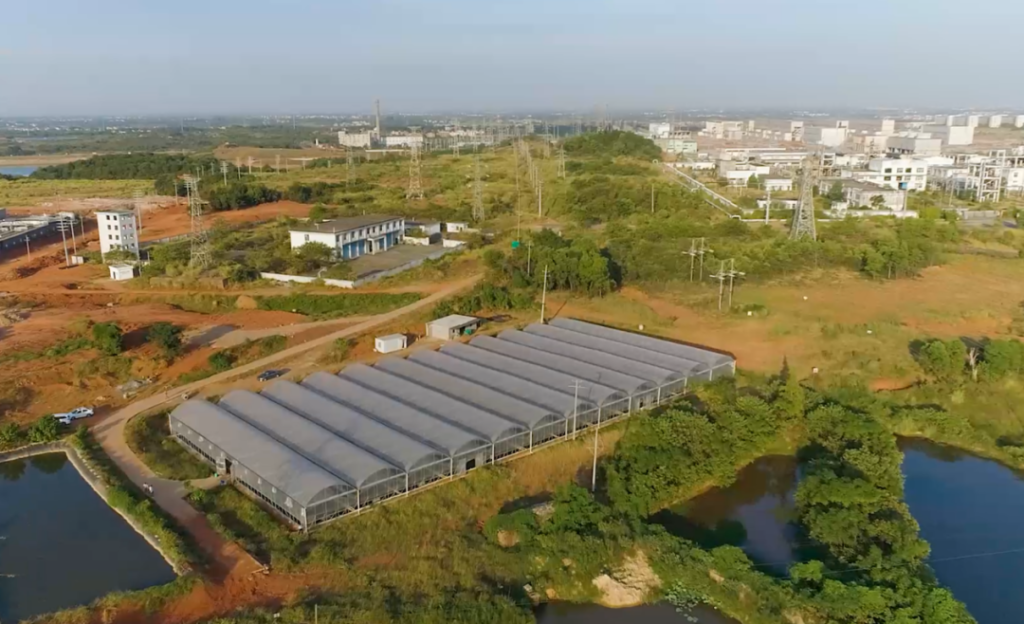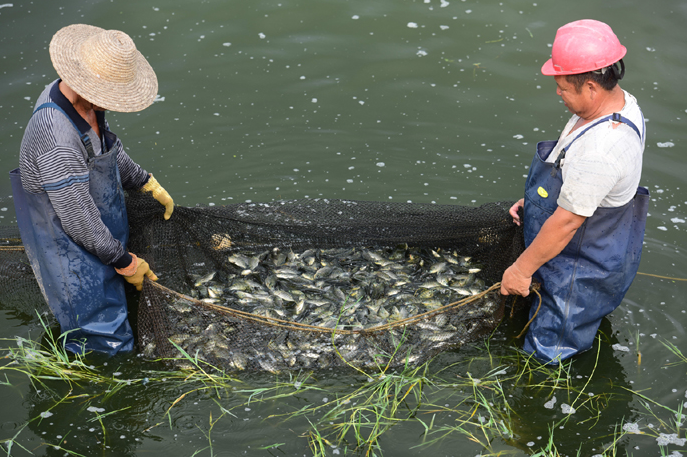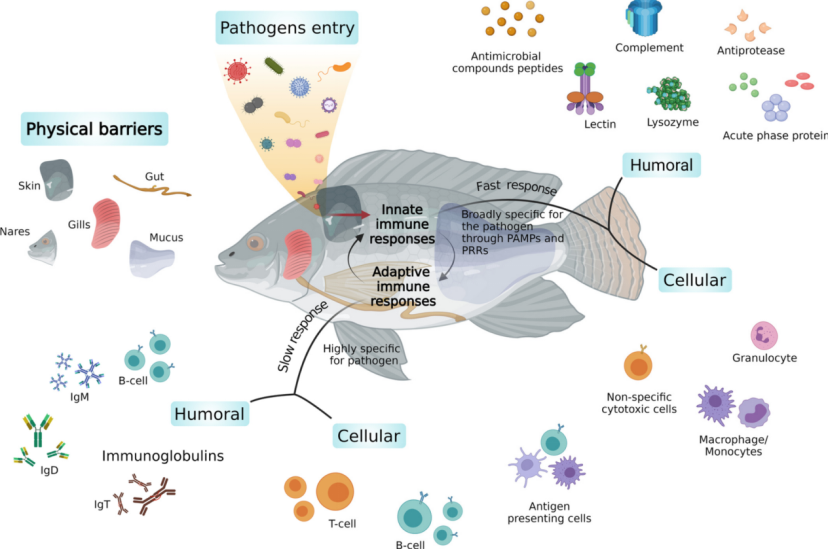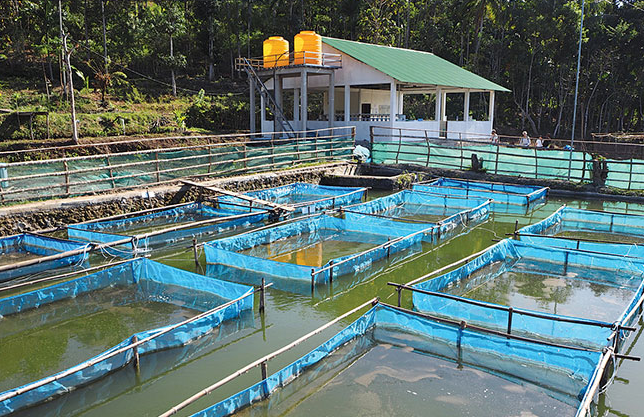1. Introduction
Tilapia farming is a burgeoning sector in the aquaculture industry, demonstrating impressive growth due to its numerous advantages. High growth rate, hardiness, and widespread demand have made tilapia farming both profitable and sustainable. So why should you consider tilapia farming? Read on as we dive deeper into this fascinating industry.

2.Why Choose Tilapia for Farming?
Fast Growth Rate: Tilapia is known for its rapid growth rate, a trait that adds to its commercial value. This fish reaches market size in approximately six to seven months, allowing farmers to turn a profit more quickly compared to other species.
High Demand in the Market: Tilapia’s mild, non-fishy taste and versatility make it a favorite among consumers worldwide. It’s served in various forms, from grilled fillets to nuggets, further increasing its market appeal.
Resilience in Various Environments: These fish are tough and can thrive in diverse farming environments, whether in tanks, cages, or ponds. This adaptability reduces the risks of farming, making it a more viable business venture.
3.Selecting the Right Breed for Farming

The choice of high-quality tilapia fry is vital for the overall yield of the fish pond. You should select healthy, active fish, with firm muscles and vibrant colors.
3.1 Species: There are several species of tilapia that are commonly farmed, including Nile tilapia (Oreochromis niloticus), Blue tilapia (Oreochromis aureus), and Mozambique tilapia (Oreochromis mossambicus). Nile tilapia is the most commonly farmed species due to its fast growth rate and its ability to tolerate a wide range of environmental conditions.
3.2 Growth Rate: Different strains of tilapia may grow at different rates. The faster a breed grows, the sooner you’ll be able to harvest and sell your fish, potentially increasing your profitability.
3.3 Resistance to Disease: Some breeds are more resistant to disease than others. A disease-resistant breed can save you a lot of trouble and expense in the long run.
3.4 Tolerance to Environmental Conditions:Tilapia species can vary in their ability to withstand different water temperatures, salinity levels, and oxygen levels. It’s important to choose a breed that can thrive in the specific conditions of your farm.
Market Preferences: The preferences of your target market can also influence the breed of tilapia you choose. Some markets may prefer a particular size, flavor, or color of fish
3.5 Source of the Breeds:The source of your tilapia breeds is also very important. You should obtain your breeding stock from reliable hatcheries to ensure the quality.
4. Preparing the Pond for Tilapia Farming

The size of the pond will depend on your expected yield. The pond must be kept clean, and you also need to regularly monitor the water quality and temperature.
4.1 Pond Design: Tilapia ponds can range in size from small backyard setups to large commercial ponds. The pond should be deep enough (often around 1-1.5 meters deep) to allow the tilapia to stay cool in hot weather and warm in cool weather. The pond bottom should ideally be clay or another type of soil that will not allow water to seep away. The sides of the pond should slope gradually to allow easy harvesting.
4.2 Water Source: Your water source should be clean and free of pollutants. Tilapia can tolerate a wide range of water conditions, but ideally, the water should have a pH between 6 and 9 and a temperature between 20 and 30 degrees Celsius. If you’re using well water, it might be necessary to aerate it first to remove any harmful gases.
4.3 Aeration: Tilapia require oxygenated water for growth. Installing an aeration system in your pond will ensure that your fish have enough oxygen. This is especially important in densely stocked ponds.
4.4 Fertilization:Before introducing tilapia to your pond, you might consider fertilizing the water. This can promote the growth of phytoplankton, which will help to oxygenate the water and provide a source of natural food for the tilapia.
4.5 Pond Preparation: Prior to introducing the fish, the pond should be drained and dried, and any predators or unwanted species should be removed. Lime can be used to balance the pH and kill any parasites or harmful bacteria.
4.6 Pond Management: Develop a management plan for regular monitoring of water quality, including temperature, pH, dissolved oxygen levels, and the presence of any harmful substances. This will help ensure optimal conditions for the fish to grow.
5. Introducing the Breeding Fish

Introduce the breeding fish into the prepared pond. The stocking density needs to be moderate to prevent excessive competition that would limit the growth of the fish.
5.1 Acclimatization: It’s crucial to slowly acclimate the fish to the new water conditions in your pond. The shock of a sudden change in temperature or water chemistry can be harmful or even fatal to fish. One common method is to float the bag containing the fish in the pond for about 15-30 minutes, allowing the temperature in the bag to slowly match the pond water temperature. Then, gradually mix the pond water into the bag before releasing the fish.
5.2 Stocking Density: Stocking density refers to the number of fish per unit of water. This is a crucial factor as it directly impacts fish growth and pond health. A general rule of thumb for tilapia is to stock about 1-3 fish per square meter, but this can vary depending on factors like the size of the fish, the size of the pond, the availability of food, water quality, and the use of aeration. Overstocking can lead to poor growth rates, disease, and even mass death.
5.3 Gender: Most tilapia farmers prefer to stock only male tilapia. Male tilapia grow faster and reach a larger size than females. Also, males will not breed in the pond, which can lead to overpopulation and smaller fish. Fish farmers often use a technique called “sex reversal” to ensure an all-male population. This involves exposing young female tilapia to male hormones to convert them to males.
5.4 Time of Introduction: The best time to introduce the fingerlings (young fish) into the pond is early in the morning or late in the evening when the temperatures are lower. This helps to reduce the stress on the fish.
Monitor Fish Health: After introducing the fish to the pond, keep a close watch on their behavior. Healthy fish should start exploring their new environment and eating within a few hours. If they remain listless or refuse to eat, it may indicate a health issue or a problem with the pond conditions.
6.Feeding the Tilapia

Tilapia is an omnivorous species and can eat algae, insects, animal carcasses, commercial fish feed, etc. To ensure the healthy growth of the fish, you need to provide nutritious, balanced food.
6.1 Diet:
Tilapia are omnivorous, meaning they can eat a variety of food including algae, plants, and small invertebrates. However, in a farm setting, they’re typically fed a commercial feed that’s been formulated to provide all the nutrients they need for optimal growth. This feed is usually made up of a mixture of proteins, fats, carbohydrates, vitamins, and minerals.
6.2 Feed Quality:
The quality of the feed is very important. High-quality feed can help ensure your fish grow to their full potential and stay healthy. Look for feed that’s specifically designed for tilapia, as it will have the right balance of nutrients.
6.3 Feeding Frequency:
Tilapia should generally be fed twice a day, once in the morning and once in the evening. However, the frequency can depend on the size and age of the fish, the water temperature, and other factors.
6.4 Feed Quantity:
Overfeeding can lead to wasted feed and poor water quality, while underfeeding can limit the growth of your fish. A general rule of thumb is to feed only what the fish can consume within 5-10 minutes.
6.5 Monitoring:
Regularly monitor the fish’s behavior during feeding. If they eat all the food quickly, they may need more. If they leave food uneaten, you might be feeding them too much. Also look out for any changes in appetite, as this could indicate a health problem.
6.6 Supplementary Feeding:
In some cases, you might choose to supplement commercial feed with natural foods. For instance, you could introduce aquatic plants or algae into the pond to provide additional nutrition.
7. Management and Monitoring

Ensure that the water quality, pH value, oxygen content, etc., of the fish pond, are all within an appropriate range. Regularly check the health of the fish.
7.1 Water Quality:
Regularly test the water for temperature, pH level, oxygen content, and levels of ammonia, nitrites, and nitrates. These are critical parameters that can significantly impact the health and growth of the fish. If any of these parameters fall out of the ideal range, corrective measures should be taken promptly.
7.2 Feeding and Growth:
Monitor the feeding habits of the fish and their growth rates. Any changes in feeding behavior can be an early warning sign of a potential issue. Regularly weighing and measuring a sample of the fish can also help you track their growth and make necessary adjustments to their diet or the pond environment.
7.3 Fish Health:
Observe the fish regularly for any signs of stress or disease. This could include changes in behavior, loss of appetite, erratic swimming, discoloration, or visible parasites. Early detection of illness can help you treat it promptly and prevent it from spreading.
7.4 Pond Maintenance:
The pond should be kept clean and well-maintained. Remove any debris or dead vegetation regularly. Excess feed and fish waste can also accumulate and need to be managed to prevent water pollution and disease.
7.5 Predator Control:
Keep an eye out for potential predators, such as birds, rats, or larger fish, which could harm your tilapia. Implement measures to keep predators out of the pond.
7.6 Record Keeping:
Keep detailed records of all operations, including water test results, feeding amounts, fish growth, incidences of disease, and any treatments administered. This can help you track your progress, identify any issues, and make informed decisions.
8.Harvesting the Tilapia

Tilapia grow quickly and can be harvested in about four to six months. Harvesting is generally done with nets, and then the fish are sorted, cleaned, and packed.
8.1 Harvesting Time: Tilapia generally reach harvest size (about 0.5-2 pounds, depending on market demand) in 6-9 months depending on the farming conditions, feed quality, and the specific breed of tilapia. You’ll need to monitor the growth of the fish to determine the optimal time for harvest.
8.2 Harvesting Method: The most common method for harvesting tilapia from ponds is to use a seine net, which is a large net that can be drawn through the water to catch the fish. The pond can also be partially or fully drained to concentrate the fish in a smaller area, making them easier to catch.
8.3 Grading: After harvesting, the fish are typically graded by size. This can be important as different markets may prefer different sizes of fish. Grading also allows you to separate out any fish that haven’t reached the desired size and return them to the pond for further growth.
Handling and Processing: The harvested tilapia should be handled carefully to prevent damage and reduce stress. They should be quickly chilled to maintain freshness. Depending on your market, you might sell the fish whole, or they may be processed further by gutting, filleting, or freezing.
Post-Harvest Management: After harvesting, the pond should be prepared for the next cycle. This could involve draining, cleaning, fertilizing, and refilling the pond before restocking with new fingerlings.
9. Conclusion
Tilapia farming, though complex, is a rewarding venture given the right knowledge and resources. Each step, from selecting the breed to harvesting, holds its significance. The journey may seem daunting, but with patience, perseverance, and the information in this guide, your foray into tilapia farming can be a success. Here’s to a fruitful and sustainable farming experience!

